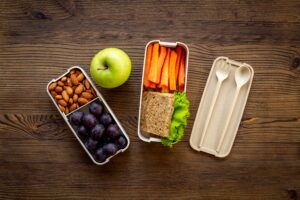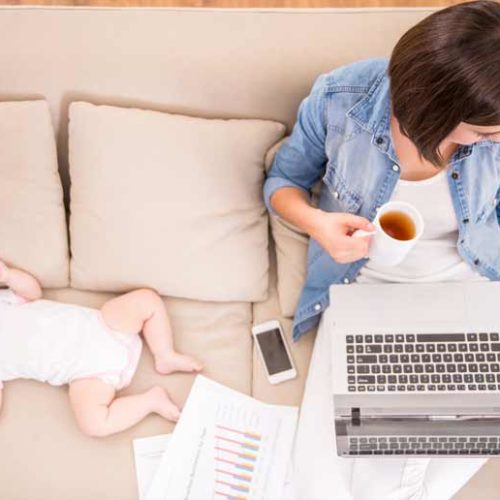How to make a sustainable packed lunch

Sustainability is more important than ever. Making a more eco-friendly packed lunch for children is one way to make sure we’re looking after the world they are going to inherit.
It is more apparent now, than ever before, how important it is for us to make sustainable choices wherever possible in our lives. Unfortunately, one of the enemies of sustainability is convenience and convenience is something that all of us rely on to keep on top of everything in our busy lives. Thankfully, there is now much more awareness around this issue and there are alternatives available that make it simple to pick the more environmentally friendly option.
Problem areas
Traditional packed lunches are a great way to ensure that your little one is eating well throughout their day, but there are some downsides. While you are certainly doing the right thing for your child, it may be causing harm to the environment. Let’s take a closer look at some of the potentially environmentally unfriendly issues with packed lunches.
Single-use plastics
Single-use plastics is a term that we’ve become very familiar with in recent years. As the name suggests, they are plastic items that are made to be used once and then discarded. Naturally, this is terrible for the environment. Common examples include plastic single-serving fruit pots, water bottles, clingfilm, straws and plastic cutlery. While it may not seem like much waste at all, these small items add up to a huge amount when used every day by the majority of children.
It’s not just throwing away plastic that’s a problem – the manufacturing of these single-use items is an environmentally unsustainable process in its own right. More than ever, making little, daily changes can accumulate into a massively positive impact.
Food waste
Food waste is another real problem with packed lunches. The last thing we want is for our little ones to go hungry, so we often pack a little more food than is necessary. This can lead to some of the lunch being left over and discarded at the end of the day. Similarly, picky eaters may not always love what you’ve packed for them, throwing it away rather than eating it. Sometimes kids will get an offer of something from a friend’s lunch that they prefer and, yet again, their food goes to waste.
This is a place where you can communicate with your child about what you’re giving them for lunch and why it’s important for them to try to eat it. It’s also worth determining whether or not too much food is being made, especially if leftovers arrive home every day. If this is the case, have an open conversation with your child and perhaps you can put together a lunch that is more in line with their appetite. Then, you can pack a few extra snacks that, if they go uneaten, can be packed again the following day.
What you can do
With the bad news out of the way, let’s turn to what steps we can take to make our children’s packed lunches more sustainable.
Recyclable and recycled materials
One of the first things to do is to focus on recycling. When grocery shopping for your child’s packed lunch, look for items that are recyclable after they’re used. The more of these you can include, the lower the impact on the environment. Going a step further, try to pick up items that are manufactured from recycled materials. These are a much more sustainable choice and opting for them contributes to the circular economy.
Composting leftovers
Completely avoiding leftovers is virtually impossible. What you can do though, is to have an eco-friendly way to deal with them. The tried and tested solution here is composting. By composting your leftovers, you’re enabling them to be converted into a nutrient-rich material that can then be used to grow more plants and crops.
Sustainable produce
When it comes to choosing the actual food you’ll include in your little one’s packed lunch, try to pick produce that is in season and ethically sourced. This includes locally-sourced food that results in less of a carbon footprint, or food sourced from ethical producers who make sure to look after both their employees and the environment.
Reusable containers and bulk buying
A very straightforward method of cutting back on plastic and other harmful materials is to use reusable containers and to buy your groceries in bulk. Lots of reusable containers are plastic and, while their reusability is a move in a positive direction, it’s possible to buy lunch boxes made from materials such as bamboo which are even more environmentally-friendly.
When grocery shopping, consider buying longer-lasting items in bulk as opposed to individually-wrapped single-serving variants. Bulk items require far less packaging overall and are the more sustainable option.
Little by little
Trying to make sure that your child’s packed lunch is a sustainable one can be daunting. While it’s important to do our very best, remember that our best is all that we can do. So don’t worry about getting every single piece right, particularly in the beginning. Making small, manageable improvements will accumulate over time and, before you know it, your little one’s packed lunch will be a sustainable one. Each time you make these decisions you can congratulate yourself for doing so, knowing that you’re contributing to a better world for your pride and joy to grow up in.
Image Credit: Shutterstock











Comments